#coptic alphabet
Text
i'm corresponding with a british university to receive a certificate and. i need to give them a last name but my last name is like impossible to spell in english and i'm losing my mind trying to write different variations and spellings of it but all of them instead sound exactly like another generic american name that's pronounced COMPLETELY differently and idk what to do!!!
#the problem is one of the letters in it doesn't exist in the latin alphabet#and i'm pretty sure that sound is very difficult for native english speakers to achieve#AND it's already a rare name even over here because yknow. i'm coptic.#so even people in my college are sort of stumped lol. i could just submit a close approximation but that would make me sad :(#would ask for help here but PERHAPS posting my last name here is A BAD IDEA. just a feeling i get!!
8 notes
·
View notes
Text

question: how do you teach rr the proper way?
#i am not a native spanish speaker and neither is my sibling#their child is obsessed with learning different alphabets right now#they find youtube videos and just memorize them#they've learned norwegian coptic and russian#in addition to english and twi
2 notes
·
View notes
Text
youtube
Watch the 2024 American Climate Leadership Awards for High School Students now: https://youtu.be/5C-bb9PoRLc
The recording is now available on ecoAmerica's YouTube channel for viewers to be inspired by student climate leaders! Join Aishah-Nyeta Brown & Jerome Foster II and be inspired by student climate leaders as we recognize the High School Student finalists. Watch now to find out which student received the $25,000 grand prize and top recognition!
#ACLA24#ACLA24HighSchoolStudents#youtube#youtube video#climate leaders#climate solutions#climate action#climate and environment#climate#climate change#climate and health#climate blog#climate justice#climate news#weather and climate#environmental news#environment#environmental awareness#environment and health#environmental#environmental issues#environmental education#environmental justice#environmental protection#environmental health#high school students#high school#youth#youth of america#school
15K notes
·
View notes
Text

#ancient egyptian#egyptian language#egyptian#egyptology#languages#linguistics#hieroglyphs#hybrit#lingblr#langblr#alephbet#hebrew alphabet#daybreak system#daybreaksystem#sandstone#language nerd#coptic#sahidic#sahidic coptic#coptic language#coptic alphabet#hyperfixation#hyperfixation go#special interest#rocks#stone#sand#notebook#notes#study notes
0 notes
Text

I made my Coptic furry.
0 notes
Note
This probably has a pretty obvious answer but I need to know - how do we know how to write in ancient Egyptian? What I mean is, we can read hieroglyphs because of Rossetta stone, but wouldn't that only show us what certain words mean in another language that we do understand, not how it's actually spelled? With names I assume it's easy, but what about actual words, when all we have are symbols and what they correlate with in another language, not actual letters. Sorry if half of that was incorrect, English is not my first language.
I think where your problem lies is that you understand that the Rosetta Stone helped crack the code of reading hieroglyphs, but you're unaware that there were other sources too. I will also say that for Hieroglyphs, the 'symbols' are the letters, we just didn't know their values.
The Rosetta Stone allowed scholars, for the first time, to see three parallel texts all in different scripts. The only one at the time that could be read was the Greek script, so, working with the simple things first, they were able to map the name 'Ptolemy' between all three texts and then started with other words. Once they understood 'okay well this word means king, but we don't know how it sounds' is when they began to use those other sources I mentioned.
One of these sources was another language that is a known descendent of Old/Middle/Late Egyptian and is called Coptic. Now Coptic is still spoken and written, though it is not as widespread as it used to be, so what happened was that Champollion studied it to see how the language worked and how those words sounded. Prior to this, it was decided that each Hieroglyphic sign couldn't be an individual word but had to have a phonetic sound value that when combined in groups formed words. So, armed with that knowledge, Champollion began to find words that appear on the stone and that also appear in Coptic to see if there were similarities. He also looked at how they were using Hieroglyphs to spell known Greek names (like Ptolemy and Cleopatra) because that's a huge indication of a phonetic value of a sign. With Coptic, he knew that the word for 'sun' was 'ⲣⲉ' or 're' and believed that the 𓇳 sign was that of the sun in Hieroglyphs. The contexts in which they were used matched, so it seemed certain that the sign meant 're' or 'ra'.
In his work on deciphering Ptolemy's name in the Hieroglyphs (written as Ptolmes) the 𓋴 sign he'd designated as having the phonetic value of 's' also appeared in the same name at Abu Simbel he'd seen the 𓇳 sign, thus meaning he could potentially read the name 𓇳𓄟𓋴𓋴. We did have names of some kings at this time, and one of them was very well known to be 'Ramesses', thus armed with a sign he knew to be 're' and another he knew to be 's', Champollion surmised that this group of Hieroglyphs must be the name 'Ramesses'. He suggested the 𓄟 must be 'm' and he got further confirmation came from the Rosetta Stone, where the m and s signs appeared together at a point corresponding to the word for "birth" in the Greek, and from Coptic, in which the word for "birth" was ⲙⲓⲥⲉ (mise). We know now that 𓄟 on it's own has the phonetic value of 'ms' so he was pretty close! Another name he used this on was 𓅝𓄟𓋴. The first sign was already known to represent the god Thoth, and taking what he'd learnt from the name Ramesses the two signs at the end must be 'ms' thus making 'thothmes'. Again, known from Mantheo was a king's name 'Thutmosis' so it was very likely to be the same name. From here, he started finding similar Greek and Coptic words and then seeing what they looked like in the hieroglyphs to decipher them and assign them phonetic values. He wasn't entirely right about these. In the latter half of the 19th Century, once Egyptologists had become more comfortable with Hieroglyphs, they were able to see Champollion's mistakes. Champollion believed that each sign only had one value like our alphabet. This was wrong! Signs can have up to 4-consonantal values, but most have only have 2-3 consonantal values. This was demonstrated above with the 𓄟 sign, which Champollion thought was just 1-consonant 'm' but it turned out to be the 2-consonant 'ms'.
After this, it was basically a lot of work understanding how the language fit together (i.e. where the pronouns/definite articles/particles etc) and then we were constantly correcting/updating our understanding of the values of the signs until pretty recently. It still happens to this day, but it's much more infrequent. I think there's only been two changes since 2007 that I know of. These changes are also why Egyptologists will tell you not to use earlier linguistic work unless you know what you're looking at. We're a baby discipline (only just 200 years!) and so a lot of stuff from even 80 years ago is so massively out of date and incorrect (Budge, it's E.A.Wallis Budge) that we beg people not to touch it with a barge pole.
410 notes
·
View notes
Text
Hey, guys! Want to vote on the best 6th-10th Century script (writing system) that I, Gecko, personally like?
Of course you do! Writing systems are SO COOL!
And here's a bit about each of the contenders:
Arabic (Naskh Script)
Derived from the Aramaic Script, which grew out of Phoenician, Arabic has a variety of forms. The Naskh script is the one I find the most beautiful, with it's extreme variation on character length and height. I also love the use of multiples colours for Ḥarakāt (vowel marks and other diacritics). Add in the elegant curves and solid lines, and Naskh Script becomes one of the most stylish scripts around.

Latin (Insular Script)
Derived from Greek, the Latin alphabet is usually a competent and pleasant mix of lines and curves, uprights and descenders. Insular script plays with these qualities, and the result is electric! many of the uprights (t, d, f) are gone. New descenders are added (r, s, f). Horizontal lines take a new prominence. Line weight is increased, and the curves become more angular. Something old to us becomes new again.

Chinese (Semi-Cursive Script)
There are many ways to write Hanzi (Chinese characters), and Semi-Cursive Script manages to combine the best qualities of most of them! The expressive curves and flow of a cursive script. The solid shapes and readability of Regular Script. One of the joys of Hanzi is the visual interest of so many unique characters; which share components, but use them differently. Semi-Cursive keeps much of that interest, while also providing a dynamic energy and movement.
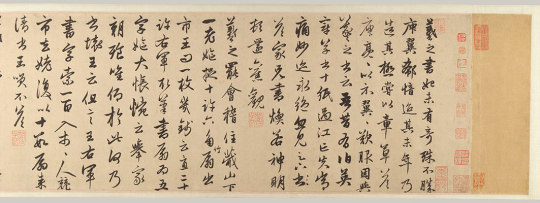
Sogdian (Cursive Script)
Derived from the Syriac script, which grew out of the Aramaic Script, the Sogdian Alphabet was developed by traders who met most of the major cultures of the Old World, and let all of those cultures affect their language and writing. Sogdian can be written write to left, like most Aramaic scripts, but also top to bottom, like the Chinese Scripts of their main trade partner. Curvy cursive lines, and characters of wildly varying length, give this script a interesting sense of flow.

Hebrew (Ktav Ashuri Script with Palestinian Vocalization)
Another offshoot of the (Imperial) Aramaic Script, the Hebrew Alphabet has a really interesting, heavy, square, solid feel. In contrast, Palestinian Voicing (an extinct form of writing vowels where all of them were above the consonants) is really light, stacked on top their vowels in little floaty towers. It's a cool combination!
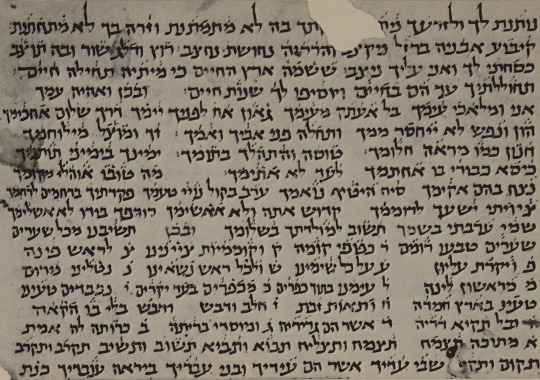
Maya (Classical Maya Script)
The most famous script of the Americas, Maya has one of the most unique reading orders of any script. Characters are written in blocks, which are then read in a zigzag (right, and then down-left) pattern. Full of heads (both animal and human), torches, seeds, and other half-identifiable shapes, Maya texts are works of art, and the more you study them, the more beautiful they become.
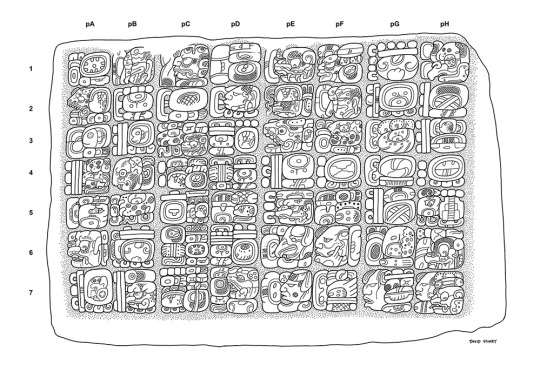
Nubian (Old Nubian Script)
Derived from Greek with additional letters from Coptic (Egyptian) and Meroitic (a previous Nubian culture). Lines above letters are used to skip parts of words deemed unnecessary. The mixture of rectangles and triangles, heavy and light line weights - it reminds me of telegrams, or early typewriter text. I love it!

Khmer (Angkorian Khmer Script)
Derived from the Pallava Script, which derived from the Brahmi Script, Khmer is probably my favourite script to write. The curves feel so good! The spirals so pleasing! You write consonant clusters by writing little letters below the main one! A joy to create, and a joy to look at.

Japanese (Cursive Script)
See these wiggles? They're Chinese characters. Elegant, looking like poetry no matter what they're saying, Cursive Japanese is art. It's also ridiculous. 3 different characters, each with multiple strokes, indicated by wiggling the brush as you draw a line! Most cursive scripts are like this, but the contrast between the square solidness of Regular Script and the flow of Cursive is one of the more extreme. What a delight!

Sanskrit (Siddham Script)
I had SO MANY options for Sanskrit (Brahmi) Scripts, you guys. SO MANY! But in north-west India, during the period I study, this version of Siddham is the prettiest. Look at the curves! Those aren't just decorative, each curvy line that goes above or below the text is a vowel. Consonant clusters are shown by combining the characters together in one spot. The lines at the top haven't yet started connecting, like they do in modern Devanagari, but there's already a sense of it's existence. Such a cool script!
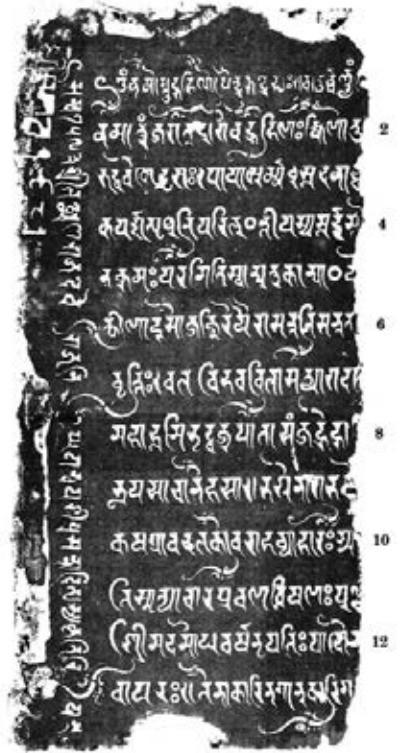
#long post#gecko's polls#calligraphy#scripts#writing systems#arabic#hebrew#khmer#maya#latin#nubian#sanskrit#sogdian#chinese#japanese
228 notes
·
View notes
Text
youtube
Watch the American Climate Leadership Awards 2024 now: https://youtu.be/bWiW4Rp8vF0?feature=shared
The American Climate Leadership Awards 2024 broadcast recording is now available on ecoAmerica's YouTube channel for viewers to be inspired by active climate leaders. Watch to find out which finalist received the $50,000 grand prize! Hosted by Vanessa Hauc and featuring Bill McKibben and Katharine Hayhoe!
#ACLA24#ACLA24Leaders#youtube#youtube video#climate leaders#climate solutions#climate action#climate and environment#climate#climate change#climate and health#climate blog#climate justice#climate news#weather and climate#environmental news#environment#environmental awareness#environment and health#environmental#environmental issues#environmental justice#environment protection#environmental health#Youtube
15K notes
·
View notes
Text
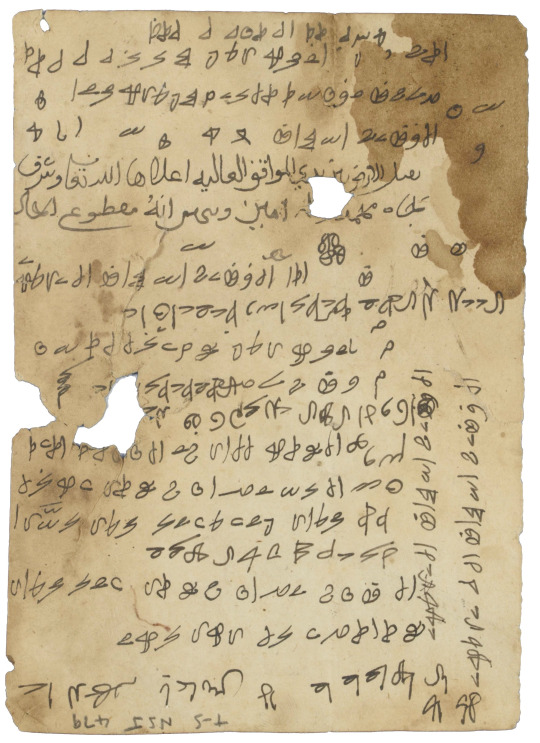
Author:
Melonie Schmierer-Lee and Alan Elbaum
Wed 22 Jun 2022
Alan, which fragment are you looking at today?
My job description at the Princeton Geniza Project is to look at uncatalogued or minimally catalogued documentary fragments, and while looking for these I came across T-S NS J479, a single page covered with strange symbols written in all directions. I’ve probably glanced at around 50,000 Genizah fragments by now, and I’ve never seen anything that looks like this.
What is it? Which language is it?
Most of it is written in what I think is a made-up code, though whether it was invented or borrowed by the writer, I don’t know. There’s also some Arabic and Hebrew script (the Arabic is a petition formula). At first glance one of the symbols reminded me of one from the Voynich manuscript, so that set me wondering whether the symbols were meaningful. I noticed the same set of around 22 symbols all in a row, written a number of times, and wondered if the letters could be assigned to an alphabet. As there are roughly 22, the Hebrew alphabet fits better than Arabic. The language seems to be Judaeo-Arabic though. I’ve annotated an image of the fragment showing the ‘translation’ of the cipher into Hebrew script.
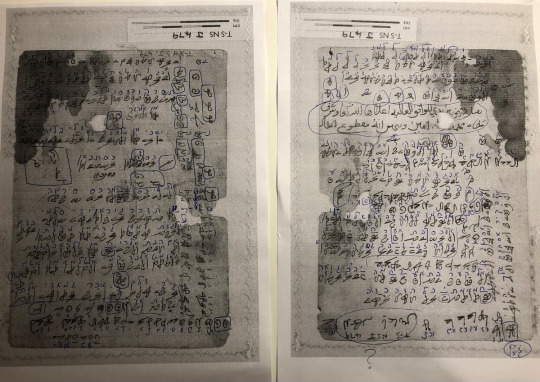
Why do you think he wrote out the alphabet several times?
Maybe he was trying to work out his alphabet. Towards the end he’s a bit inconsistent with some of the symbols assigned to each Hebrew letter, so perhaps he was refining it. He also writes the cipher alphabet from left to right at one point, which was interesting to me.
We keep saying ‘he’ – do we know who the author was?
He writes his name – ‘al-faqīr Isḥāq al-Yahūdī’ – as well as two verses from the revered Sufi poem known as Qaṣīdat al-Burda by Al-Būṣīrī (fl. 13th century), so that helps to date the fragment somewhat. Here are the lines in Stetkevych's translation (Suzanne Pinckney Stetkevych, The Mantle Odes: Arabic Praise Poems to the Prophet Muhammad (Bloomington, IN, 2010), p. 92.):Was it the memory of those you loved at Dhū Salam / That made you weep so hard your tears were mixed with blood?
Or was it the wind that stirred from the direction of Kāẓimah / And the lightning that flashed in the darkness of Iḍam?
It’s Mamluk or perhaps Ottoman era. There’s also some pornography. I’ve learned two different words for penis and all sorts of other terms while studying the text. It’s fairly graphic. It ends ‘all of this is lies’, so perhaps Isḥāq was covering his tracks in case his parents cracked his code! Kind of frivolous but also kind of interesting.
Do you know of any other ciphers that have been found in the Cairo Genizah?
Gideon Bohak has written about at least one cipher that he’s found in the Genizah, and Oded Zinger has found a letter in Arabic and Judaeo-Arabic with a portion in an incomprehensible cipher. Almost all the words begin with alef, which makes us think it’s not a straightforward substitution cipher. Amir Ashur pointed out that some merchants in the India Book use Coptic numerals to create a secret code that hasn’t yet been cracked. I put this fragment up on social media after I started working on it, and people offered up all sorts of interesting parallels. Arianna D’Ottone-Rambach shared her article on an encrypted Quran manuscript that I hadn’t known about, for example. I’m so excited to join the field when this spirit of collaboration is recognised and valued. If I can make a discovery that lets someone else discover something further, then that’s all the better.
Thanks, Alan!
Alan Elbaum is a Senior Researcher at the Princeton Geniza Project.
23 notes
·
View notes
Note



How do you think what logical true - the alphabet with "Б" ( like Inglish B), or without it. In logical reason with "Б" was at first, then it was lost. But it is so incredibly!
In Greek "y" it's like Inglish G. In Slavs language all pronounced like A, B, V, G, D... and ets.
Unfortunately I don't really understand your question. But according to my understanding, you're trying to ask whether the Б letter existed in the Coptic alphabet or not. The answer is no, because the equivalent to this letter is the Coptic letter Ⲃ which sounded in the first centuries as a fricative /β/ or /b/ in the end of words , and then as a /w/ in late Coptic as a result of Arabic influence , and finally as /v/ in the ecclesiastical pronunciation after the Church's pronunciation reform in 1858.
As for the letter y, its equivalent is the Coptic letter ⲩ which sounded like /w/ when followed by an ⲁ or ⲉ, then later as /v/ in ecclesiastical Coptic and sounded like the German ü in Greek words considering the pronunciation of the Greek language during that time.
7 notes
·
View notes
Text
RARE THEORY : WHY AND HOW THETA WILL BE THE 9TH QUEEN OF KAKIN
Yo I already talk about this in some comments. But I really wanted to make an official post of that theory here in my blog.
So there is this genius @itsmyara and @hunterexamcheatsheet who talk about the fact that each actual queen of Kakin's name are related to their position in the harem hierarchy :

Then we have Theta, Theta means nine in ancient greek.
And with what we highlight above. We know that Togashi put way to much attention in the queen's name just for accidentally making such a "coincidence".
Furthermore, there is Oito's backstory. Oito WASN'T born to be a queen AT ALL. Her backstory shows to us reader that EVERY WOMEN of every social statues have a chance to be a queen if the king "fall in love" with them. And that includes my baby girl Theta.
Of course only 8 women success to make it, so it's nearly impossible. Plus, "the King falling in love again" is an even rarer possibility because of the context of the succession war. Indeed, why Nasubi would marry a woman when he seems to be ready to die in 2 months. Theta can't even have the time to birth a new prince at this point.
If he marries Theta she would not make any heirs to the throne, so she would be a pretty "useless" queen. That the second biggest reason why it seems impossible for Theta to be Nasubi's wife.
BUT !
Let's go back to the comparison of the meaning of Theta's name and the other queens. All the queen's name are related aproximatovely to numbers but they don't have any meaning by themselves expect from Oito = eight and Seiko which is a famous watch mark in japan.
On the other hand, the word Theta has an HUGE array of meanings. Many recognize the mathematical symbole for naming angles.
But it is above all a letter in its own that has been derived and incorporated into the alphabet of many dead languages :
The Ionic, Ancient Greek, Modern Greek, Etruscan, Gallic, Cyrillic, Slavic, Coptic and Armenian alphabet for examples.
This letter will then take as many different forms depending on the civilizations that use it.

In the end, Theta’s name in comparison to others can be interpreted as adaptability, communication or even impartiality. So even throught Theta doesn't make any child she would be an excellent key of power stabilisation if she is used correctly.
The story already shows us very well how Theta can adapt to a large panel of complex situation. She is also an essential source of information and meticulous analysis.
Nasubi will probably feel for those qualities. Plus, to survive this far, Theta WILL NEED to deploy every weapons she had in order to survive. I am sure that she will indirectly stole some other royal hearts in her tricky way to the mysterious mission success 😁

.
.
.
WHOA EXPLANING A THEORY IS EXAUSTING AS FUCK 😫.
But it was also sooooo fun !😊 Anyways, I hope I was clear and if I was not or if you want to hyperfixate over Theta with me TALK TO ME, IT WOULD BE AN HONOR FOR ME TO HAVE DEEP THETA CONVERSATION WITH YOU *Trembles uncontrollably and violently*
#hunter x hunter#hxh#hxh theory#theta#theta hxh#theta nineth queen#theta hoicoro#my queen 😫#litteraly#guys even if it's for contesting my theory or for writting an essat over pastas talk to me I am boooooored 😭
28 notes
·
View notes
Text
The Athian Alphabet Thoughts
If you look at the ordering of the letters as depicted in the official art book, one thing that is noteworthy is that the order is not simply "A, B, C, etc" as it is in English or most other languages whose major writing system is based on the Latin alphabet.
It also isn't "A, B, G, etc" as is the conventional order pioneered in the Greek alphabet and used in other writing systems such as Cyrillic, Coptic and even Gothic.
The order goes "U, B, K, A, J, etc."
If anything, it reminds me of the Futhark which has the most bizarre (at least, to a non native user) order used for an Indo-European language, and it makes me wonder what in-verse explanation there is for Athians deciding on an order like that.
#forspoken#forspoken meta#meta#athia#athian alphabet#athian language#food for thought#my thoughts let me show you them
5 notes
·
View notes
Text
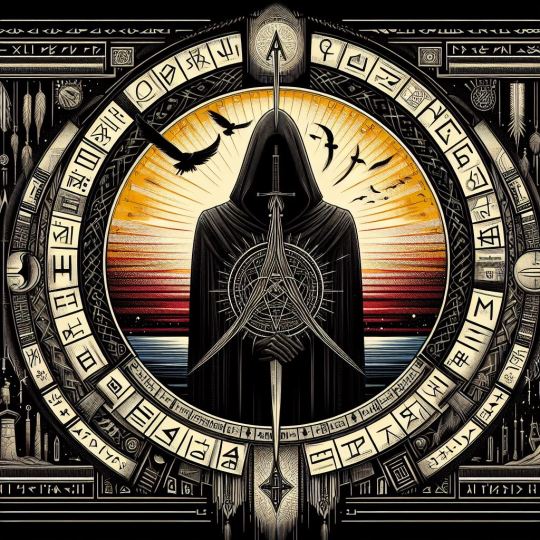

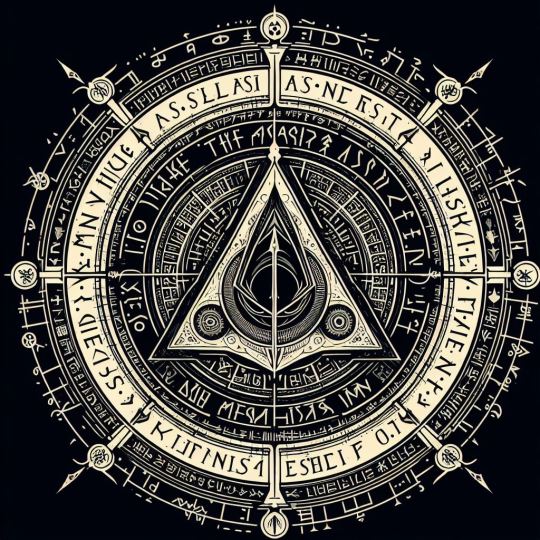
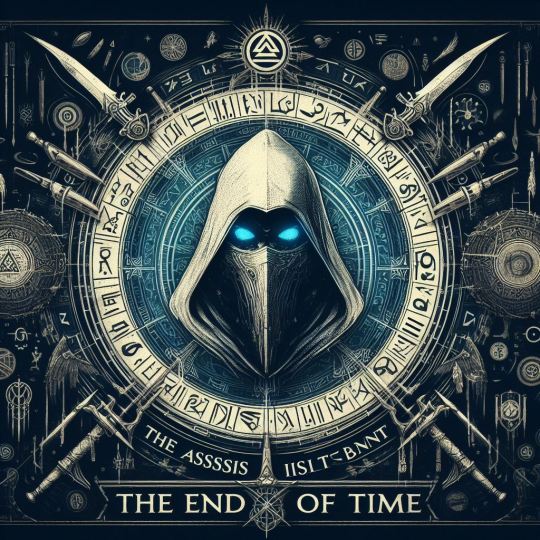
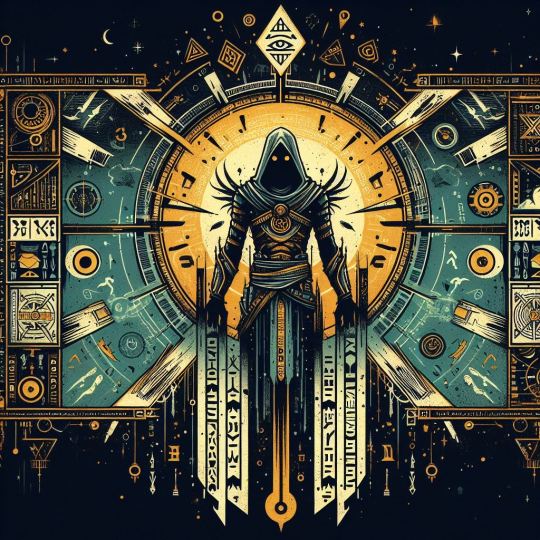
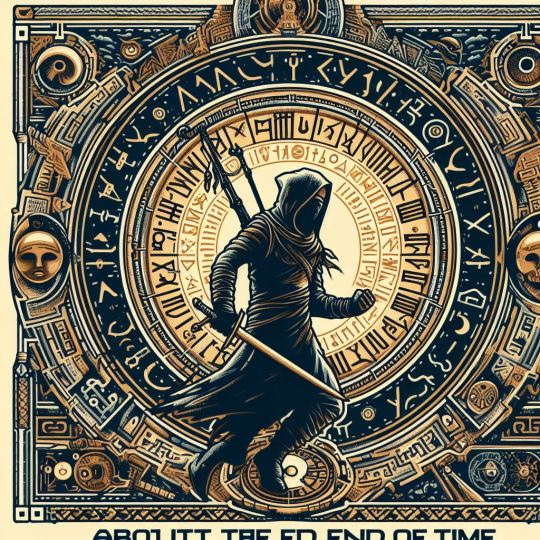
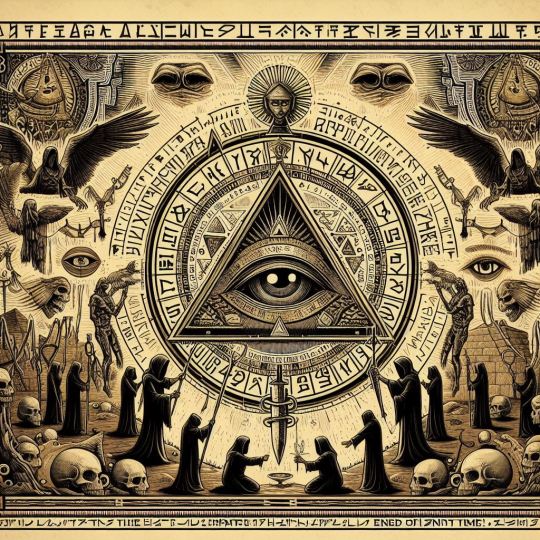

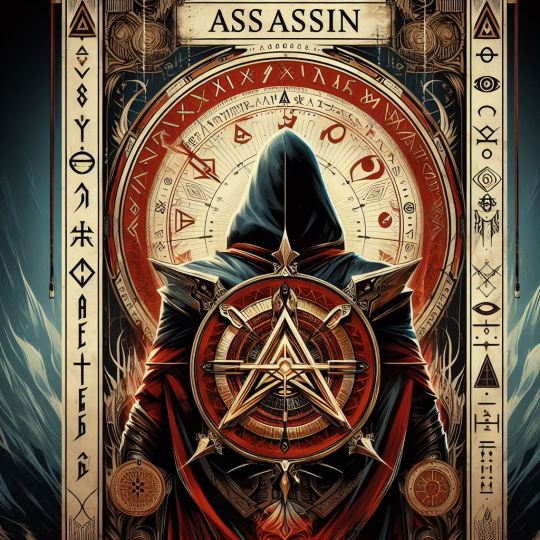
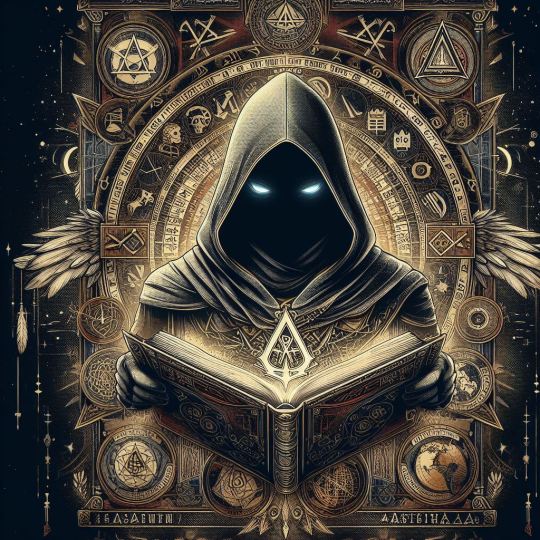
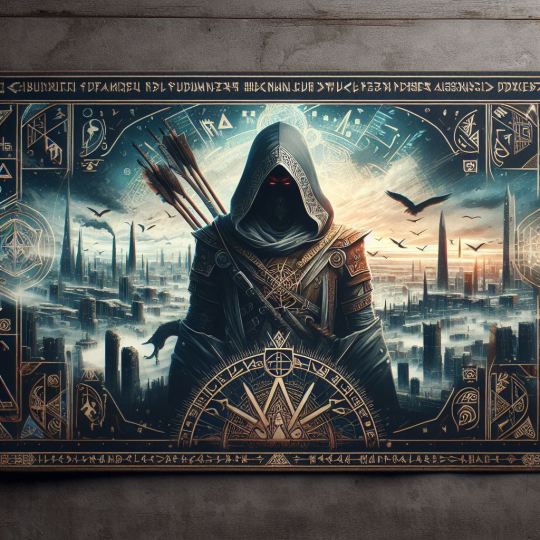
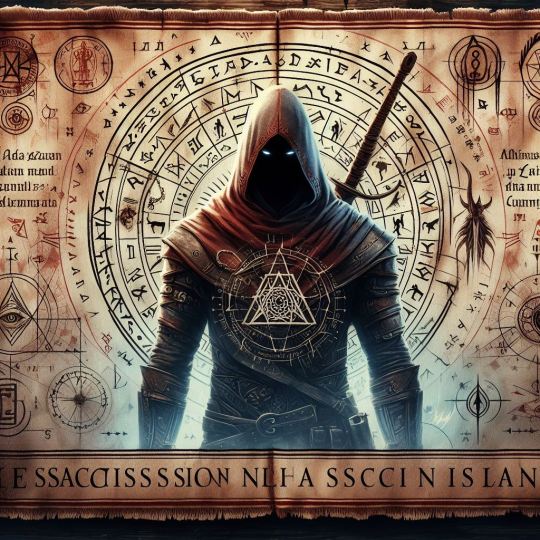
Various Covers to use with our blog for ideas about Assassins and the end of the world.
If you like them feel free to use them.
I asked Bing Search Chat about the symbols on the images and this is what it told me:
The symbols on the banner are from different writing systems that have been used in various cultures and times. Here is a brief explanation of each system:
Hieroglyphs are pictorial characters that were used in ancient Egypt for writing the Egyptian language. They combined logographic, syllabic, and alphabetic elements, with more than 100 distinct characters. Hieroglyphs were used for religious and monumental inscriptions, as well as for everyday writing on papyrus and wood. Hieroglyphs were deciphered in the 1820s by Jean-François Champollion, with the help of the Rosetta Stone12.
Isu language is a fictional language that was created for the video game series Assassin’s Creed. It is the language of the Isu, an ancient and advanced civilization that preceded humanity and influenced its history. The Isu language is based on a modified version of the Phoenician alphabet, with some symbols resembling Greek, Latin, and Coptic letters. The Isu language is used to write messages, prophecies, and puzzles for the modern-day assassins who explore the Isu’s legacy34.
Runes are characters that were used in various Germanic languages, such as Old Norse, Old English, and Gothic. They are derived from the Old Italic scripts, and have a close relationship with the Latin alphabet. Runes were used for various purposes, such as writing, magic, divination, and carving. Runes have a symbolic and mystical meaning, and are often associated with Norse mythology and paganism .
The banner also has the word “END” written in English, which is a modern Indo-European language that uses the Latin alphabet. English is the most widely spoken language in the world today, and has a rich and diverse history and literature .
The banner seems to convey a message about the end of time, or the apocalypse, using symbols from different cultures and eras. It may be a reference to the Assassin’s Creed lore, which involves a conflict between the Isu and humanity, and a prophecy about a solar flare that threatens to destroy the world . Alternatively, it may be a creative expression of the user’s own imagination and beliefs.
Learn more 1 en.wikipedia.org 2 britannica.com 3 norsemythologist.com
#codex assassin#fanbased#assassinscreed#the assassin's way#end of the world#end of time#Ragnarok#history#nothing is true?#tumblr canon
2 notes
·
View notes
Text
coptic alphabet is like. this letter is sometimes pronounced as j and sometimes pronounced as q and sometimes pronounces as c and sometimes pronounced as p
#i'm exaggerating but some of these are so hard to grasp because i can't make a connection between the two sounds#like. sometimes g sometimes j? makes sense#sometimes w sometimes v? cool#but what do you mean sometimes b sometimes w 😭
20 notes
·
View notes
Text
Variance in magical languages and Pronunciation

Spicy topic, everyone here properly know the topic of some languages being effective and powerful in magic, we all heard celestial alphabet or magical languages and most languages are magical and they elect a response but the difference in the current of languages.
I mean this in the most practical level and not that one language is better than the other, but that when you say a spell or an invocation in one language the way it manifest is very obviously different from another. NOW does this mean that if the language was originally in one then translated to another like Greek -> English or Arabic -> English, does it change the essence of it? does it change the method the invocation works in it's original language?
My answer would be tending toward a Maybe-ish negative, we tap into this current of the language originally, while translating the language from one to another does need some modification and trying to approximate the meaning. The text itself still retains a significant "original" force of it. This is a definitely very spikey topic, Gregory von Mёbes and Mouni Sadhu both agreed on that there are two "kinds" :
Magical formula Sounds based on pronunciation: Aum
Magical formula based on their content : Christian Prayers, Self-Inquiry, Incantations, etc.
and...I would disagree with that notion, because the words are definitely full of content and the whole arrangements of the prayers are still based on the content, aiming for proper pronunciation is good but even if your pronunciation is butchered and you try your best to say it then you will still have results with it. It's just that there's always this fascination or mythology behind the perfect pronunciation that doesn't exist in real life, which have it's own esoteric depth.
I digressed, but the main idea that I want to set forth before continuing is that the essence of the language doesn't need to be focused on the pronunciation nor does it matter if it is translated or not, that's the two points I want to set as postulate for this post, you can disagree with me and you're welcome to disagree with me and discuss it as a reblog.
Okay, that's out of the way. When you work with a language, that language burst forth when you speak it out to the world and the change from one language to another is very noticeable and significant. I want to emphasis that one language is not better than another not to open a channel where people might discriminate nor to say that complete gibberish equal a profound scripture.
Most of what I said now seems to be "common sense" but I wanted to get out of the way asap.
Starting with Sanskrit through Dharanis I noticed personally the experiences to be very auditory and visceral in a sense, there's usually a very distinct subtle difference in the area over time that builds up. One interesting thing to note is that usually after multiple weeks of recitation there's the occurrence of an exotic form of a flying or a crawling insect appearing, the insect is so mesmerizing and colorful in their color that it doesn't appear to be native in the area. This have happened to me multiple times.
Hebrew is usually seen as the magical language in modern golden dawn traditions and the time before it, Hebrew have a very distinctive astral imprinting. Of course hebrew isn't distinctly only on the level of the astral and nor any of the languages are, yet with the hebrew letters, prayers, invocations, and divine words there's a very strong impression on scrying, imagination, and visualization that other languages affect it indirectly.
Greek and the magic in PGM which included Ancient Greek, Coptic, and Demotic have the aspect of working with and through light, shadow, refraction and reflection of light. This might be a bit weird but there's a very noticeable effect on the lighting in the area you work in, the way the shadow look, a lot of stuff to do with visual disturbance and primarily through the light.
Arabic is on the level of Sanskrit on physical disturbance and visceral level it is on. Arabic is a floating, airey, physical language like a whirling vortex, there's a very distinct level and very noticeable residue from prayers and invocations using it. If there's anything to say here in term of arabic language is that with repetition crunching and focus, stuff might start moving.
English, a language spoken and read by YOU the reader. English is a versatile language and honestly I found the invocations that are originally composed in english to be kind of balanced between the force and normal words. The invocation carries the language in this sense and give it a different level of "existence", Jake Stratton Kent talked about English Qabala and that's it's own can of worm. Suffice to say It's not wrong to prayer, invoke, or work in english.
Coming to conclusion of this post, I hope that this post doesn't end with just saying this or that IS the REAL MAGICAL LANGUAGE. That this post is door open for people to practice, to try, and to experiment with different languages, with translations/transliteration, experimenting with butchered pronunciation or not, etc. I hope that people share their own experience and for us to compare results. May we climb the mountains of language together :)
Image Credit: Ten Magnificent Landscapes - View 7 by Ren Xiong (1823-1857) [ https://artsandculture.google.com/asset/view-7/CwGS96xSXOVi6Q?childAssetId=8AHonNMo4DSoTg ]
10 notes
·
View notes
Text
After literal weeks of trying to decipher Harrow’s coptic chant for my self indulgent purposes, of literally molesting the alphabet, trying to search for different versions, decrypt the actual words and choking 7 different dictionaries, I can proudly say that the only word I managed to decipher is the first one, nehes, meaning to arise / to awake, and I’m fucking surrendering on the rest unless someday the producers of the show themselves will at least provide an official transcript.
Knowing the meaning of this first word and the fact that Harrow uses, well, Ammit’s cane and summons her powers, I suppose, if you squint, it probably keeps going somewhere around the subject of “Ammit wake the fuck up it’s time to go wild” but I cannot say it for sure and I’m just too tired to keep trying.
#either I get an actual translation or I will make the meaning up for my fanfiction purposes#I'm THIS close to trying to contact Mohammed Diab on twitter or something I swear#I'm going mad over it#subtitles: 'HARROW: Chants in coptic'#YEAH THANKS THAT'S HELPFUL#just my ramblings don't mind me#arthur harrow#moon knight
60 notes
·
View notes
Note
Hello, it's me again. I apologise if I'm starting to bore you
Firstly - thank you very much for the Gamayun's Ruling. It looks beautiful. Though I could ask to make a small addition for some letters of Slavic alphabets (ђ, џ, Ґ, Ђ, Ѓ, Ž, Š(Or just diacritics for this Neography)). I will understand if this is too much, for which I apologise in advance.
Secondly - can I ask for a modern Demotic-Hieratic script for Egyptian/Coptic. Alphabet, Abugida, Logographic, Abjad, Syllabary, something else - I leave it to your choice.
Thirdly - do you know of any font creation programmes? I would be glad to try to realise something from your works into a working font.
Thank you in advance for your reply. Большое вам спасибо.
Why, shiver me timbers, you don't bore me liege, don't you worry about it. My only concern is what you would possibly need all this for? I am glad to have my works used in media but I'd like to be notified before that takes place, that is, and credited once it does.
You are welcome for Gamayun's Ruling and yes, I can do some stuff for it, but that's after-
Tamsah Narueljan

Script for Coptic orthography.
Lettershapes take inspiration in Demotic, script has alphabetic, alphasyllabary and abjad modes.
Some letters can form ligatures - main criteria is for them to form either a L turn or a T-cross section (as seen in the example above the key).
Name derived from Arabic for "scarab's whisper".
Now-
Extended Gamayun's Ruling.

5 notes
·
View notes
Note
Hi there, long time listener (in the sense that I follow CT and they sometimes reblog your stuff), first time caller. So the ancient Egyptians very obviously didn't use the Latin alphabet, and thus didn't put their own writing in forms that English-language keyboards can type out; the current way of transcribing their stuff, which language's orthography is it based on? (Like, how Aztec language is transliterated in a way that made sense to the Spanish, where 'X' sounds like 'sh', instead of the 'ks' that it refers to in English.) Because just among various European languages there's like four different understandings of how 'J' should be said, for example; and 'Q' might or might not have its own distinct sound, depending on what language's transliteration you're looking at. I don't know if this makes any sense, but basically: which language's orthography claimed first dibs on how to write ancient Egyptian sounds?
My apologies if this is something you wouldn't know about; I legit have no idea if "the history of people studying this area of history" is something that gets covered in that field, or if it's a separate field, or if it depends on the program or university.
We use the International Phonetic Alphabet (IPA), as well as our own transliteration systems created during the translation of Hieroglyphs. These are largely built from the consonantal sounds Champollion was able to find through Coptic (a descendant of the Ancient Egyptian language).
Since transliteration is a system whereby one language script is mapped onto another, Hieroglyphs are merely being mapped onto the Latin script. However, there is currently no one overall system for doing it. This is why you'll find English Egyptologists using =i for the first person pronoun, and German Egyptologists using =j. Nevertheless, they are pronounced roughly the same because we as Egyptologists have assigned sounds to them. This is because we don't actually know how Ancient Egyptian was pronounced. There's a little bit of reconstruction we can do based on Coptic. We can trace certain sounds in the pronunciation of Coptic in the spellings of Egyptian, which is how Champollion managed to translate Hieroglyphs in the first place. So sounds we do 'sort of' know are reflected in the consonantal value they've been assigned in transliteration. We're using, as best we can, the Egyptian/Coptic sounds, not modern sounds. The only time we use modern sounds, and this is where things differ in transcription not transliteration, is when we're inserting vowels in Egyptian words. Since we've not got any concrete sounds for vowels except the very softened form in Coptic, we mostly insert whatever vowel feels best. This is why you find the word imn or Amun being spelt as Amon, or Ax-n-itn Akhenaten spelt as Achenaton.
55 notes
·
View notes